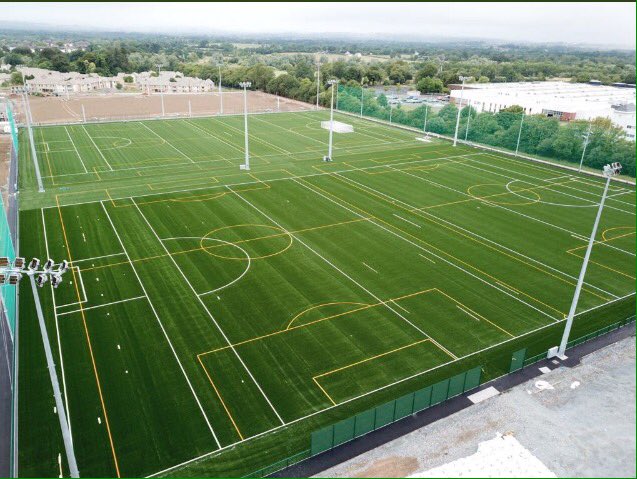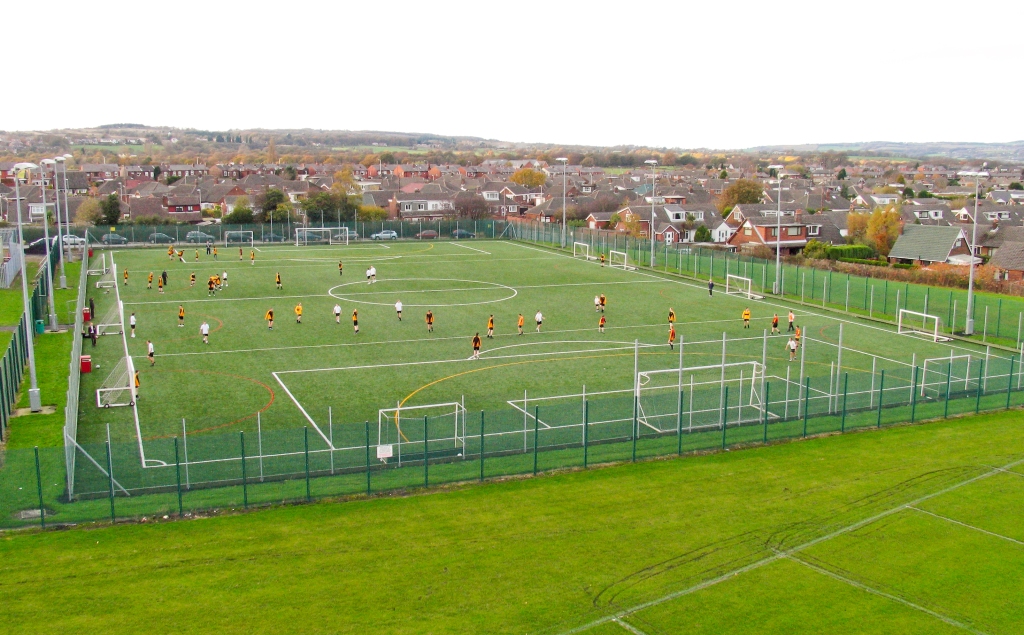Sport is a wonderful thing. It can transport us away from our fears and troubles, and into a state of hysteria. It teaches us love, loss, anger and annoyance. Some of our most enjoyable days of our lives are because of sport, and so too are some of the toughest. There’s no doubt about it, sport is a beautiful but integral facet of society.
The importance was highlighted during the Covid 19 pandemic when sport was cancelled worldwide. We craved any bit of action, no matter how far back through the archives we had to go. Sport is a hobby, and a way of life. It’s also important for our health. We are in the midst of an obesity epidemic, and sport is important in combating this. Be it lifestyle or social; sport is crucial. Because of that, it must evolve in order to meet 21st century demands.
So, what kind of evolution needs to happen, and what are municipal all-weather pitches? Essentially, I am proposing for Sport Ireland to promote a step into the future, by pitching for and building an array of municipal and all-weather training grounds across the country. Now if you are an Irish person reading this, you will understand that such a move between all major codes would be highly unlikely for sporting political reasons; for those outside of Ireland, it’s a long story.
I know there would be many challenges, but this is purely hypothetical. Sport Ireland and the Government couldn’t afford such facilities in every town in Ireland, but some places are in dire need of improvements. With the climate crisis causing more and more unplayable pitch related cancellations every year, upgrades are needed. If we want to maximise how much training and exercise our kids do, we need to improve our infrastructure.
For the purpose of this article, I will park the political challenges, and focus on the greater good; making sport more and more inclusive and important in our society. I will try and weigh up the costs and benefits, including injuries, accessibility and funding.
Case Study: UL’s Maguire Fields Project
Before I weigh up the pros and cons, let’s first take a look at a case study, the state of the art “Maguires Pitches” in the University of Limerick. Back in 2016 the UL students voted in favour of the multi-million euro build on the outskirts of the campus. It was completed in 2019, and is a sight to behold.

It is a fully-floodlit facility consisting of 3 pitches, and ball alleys. There’s one natural turf pitch; and two all weather ones. The astro turf area is big enough to fit 2 full size GAA pitches, and 6 football pitches. It came in at a cost of approximately €7 million for this 35,000m2 area. It is used by a wide variety of students for training and individual practice, and even local community groups.
I myself am a student at the University of Limerick, and have spent many evenings playing soccer or hurling on these pitches. I’ve been down there at 10am and 10pm and there’s always other students there. It’s a getaway or a place of enjoyment or practive for so many people, and a worthy investment.
It is because of the success of sites like this one, that I believe further developments can have a hugely positive effect across the country.
This all sounds well and good so far, but what are the positives and negatives to such an investment? Well as you would imagine with “all-weather facilities”, they are designed to be playable surfaces all year round. Even having one 3G/4G pitch could help with the amount of training sessions that can take place over a season.
Such facilities are important for clubs and the wider society in general. Be it for walking or training, or even family fun, having a multi-purpose site has huge advantages.
That said, there are strong drawbacks too. Firstly, it is a costly project which could not be rolled out in every town overnight. The case study project cost €7 million for an expansive area including floodlights. Adding to that are the persistent injury clouds that hang over games played on artificial turf. From head to knee injuries, the firmer surface features an inherent risk of injuries. There would also be stern opposition in luring training to a multi-sport site and away from their old stomping grounds, but that’s for another day.
So, is it worth building next generation facilities if they are expensive and may cause injuries? My answer is still yes. My idea is to use these sites for training and fitness purposes. There are dangers in having full contact games on them, so a warning is applied there; but for fun and fitness, it’s relatively safe. You can still get hurt on a grass pitch, but you cannot use it 365 days a year.
Try building a few. Test the waters. Invest in the future where it’s needed most and reassess further down the line. I think it’s a necessary step for the children of tomorrow. We cannot fight obesity by playing soccer on a flooded pitch.


Leave a comment